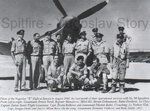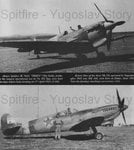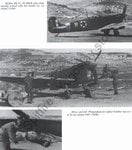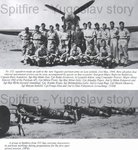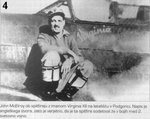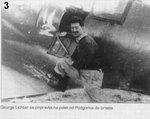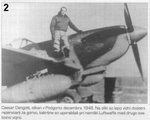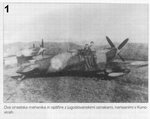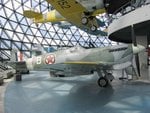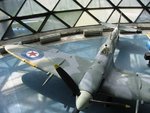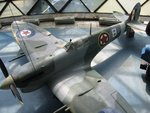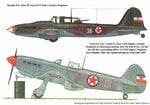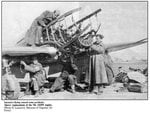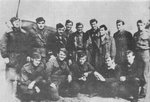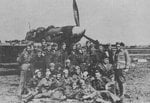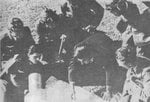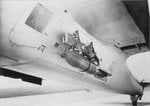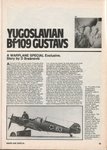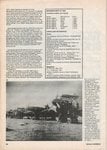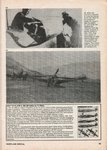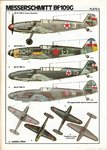imalko
Chief Master Sergeant
Introduction
With my continuous thread about Slovak fighter squadron "Letka 13" (13.(Slowak)/JG 52) still under way, after prolonged consideration I've decided to start another long term thread. I've envisioned this thread as a place to post information and pictures and discuss involvement of Yugoslav airmen and their aircraft in WW2. I believe that this is quite interesting aspect of aerial warfare in WW2, but for many probably less known. Yugoslav airmen for the first time fought the Axis in April 1941, after the collapse of Yugoslav Kingdom some of them escaped and managed to join the Western Allies, others joined Partisan resistence movement and some pledged their allegiance to so called Independent State of Croatia or NDH (allied with Third Reich), thus seeing action against the Soviets on Eastern front with 15.(Kroat)/JG 52. There were examples when some pilots of Croatian nationality flew in Royal Yugoslav Air Force against the Germans, then with "Zrakoplovstvo NDH" alongside the Luftwaffe and against the Soviets, only to defect to the Partisans in final stages of war. During the course of the war Yugoslav pilots flew many different types of aircraft - Bf 109, Hurricane, Spitfire, Do 17, SM.79, Blenheim, Hawker Furry, indigenous fighters of Yugoslav design Ik-2 and Ik-3, Stuka, B-24 Liberator, Yak-1 and Yak-3, Il-2, MC.202, G.50, etc.
This is just to mention some topics that will be covered in course of this thread. I don't intend to fallow some particular chronologic order in covering certain topics, but would like to cover (or discuss) them one at the time. Also I cant promise very frequent posts with new materials, since almost all my materials are in Serbian language and require translation and in some cases editing (to shorten text and make it more concise) before posting.
For those members of the forum which are not familiar with this subject, hope you will find this thread interesting. Others among you which have knowledge, information or pictures on this subject, please feel free to share and post your materials in this thread or discuss details on the topics as will be gradually covered.
Articles posted so far:
Chapter 1
Spitfire - Yugoslav Story (Part I and II)
Operation "Velveta"
Last Surviving Yugoslav Spitfire JK 808/9489
Chapter 2
Air Support in the Breakthrough of the Srem Front in April 1945
Chapter 3
Dornier Do 17 - Yugoslav Story
Chapter 4
Yugoslav Bf 109 Gustavs
With my continuous thread about Slovak fighter squadron "Letka 13" (13.(Slowak)/JG 52) still under way, after prolonged consideration I've decided to start another long term thread. I've envisioned this thread as a place to post information and pictures and discuss involvement of Yugoslav airmen and their aircraft in WW2. I believe that this is quite interesting aspect of aerial warfare in WW2, but for many probably less known. Yugoslav airmen for the first time fought the Axis in April 1941, after the collapse of Yugoslav Kingdom some of them escaped and managed to join the Western Allies, others joined Partisan resistence movement and some pledged their allegiance to so called Independent State of Croatia or NDH (allied with Third Reich), thus seeing action against the Soviets on Eastern front with 15.(Kroat)/JG 52. There were examples when some pilots of Croatian nationality flew in Royal Yugoslav Air Force against the Germans, then with "Zrakoplovstvo NDH" alongside the Luftwaffe and against the Soviets, only to defect to the Partisans in final stages of war. During the course of the war Yugoslav pilots flew many different types of aircraft - Bf 109, Hurricane, Spitfire, Do 17, SM.79, Blenheim, Hawker Furry, indigenous fighters of Yugoslav design Ik-2 and Ik-3, Stuka, B-24 Liberator, Yak-1 and Yak-3, Il-2, MC.202, G.50, etc.
This is just to mention some topics that will be covered in course of this thread. I don't intend to fallow some particular chronologic order in covering certain topics, but would like to cover (or discuss) them one at the time. Also I cant promise very frequent posts with new materials, since almost all my materials are in Serbian language and require translation and in some cases editing (to shorten text and make it more concise) before posting.
For those members of the forum which are not familiar with this subject, hope you will find this thread interesting. Others among you which have knowledge, information or pictures on this subject, please feel free to share and post your materials in this thread or discuss details on the topics as will be gradually covered.
Articles posted so far:
Chapter 1
Spitfire - Yugoslav Story (Part I and II)
Operation "Velveta"
Last Surviving Yugoslav Spitfire JK 808/9489
Chapter 2
Air Support in the Breakthrough of the Srem Front in April 1945
Chapter 3
Dornier Do 17 - Yugoslav Story
Chapter 4
Yugoslav Bf 109 Gustavs
Last edited:


